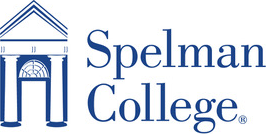Art Minor
Common Career Paths
- Biology + Art History = Physician
- Chemistry + Art History= Art Conservator
- Computer Science + Art History = Entrepreneur
- Economics + Art History = Wealth Management Specialist
- Business + Art History = Gallery Director
- Psychology + Art History = Art Therapist
Alumna Spotlight
Adrienne Edwards, C'96
Edwards was named the Engell Speyer Family Curator and Curator of Performance at the Whitney Museum in 2018. Before that, she served for eight years as curator at Performa, a New York City arts organization dedicated to exploring the critical role of live performance; she was also the curator-at-large for the Walker Art Center.
For Performa, Edwards realized new boundary-defying commissions, as well as pathfinding conferences and film programs with a wide range of over forty international artists. While at the Walker, she co-led the institution-wide Mellon Foundation Interdisciplinary Initiative, an effort to expand ways of commissioning, studying, collecting, documenting, and conserving cross-disciplinary works. e
View Announcement Press Release